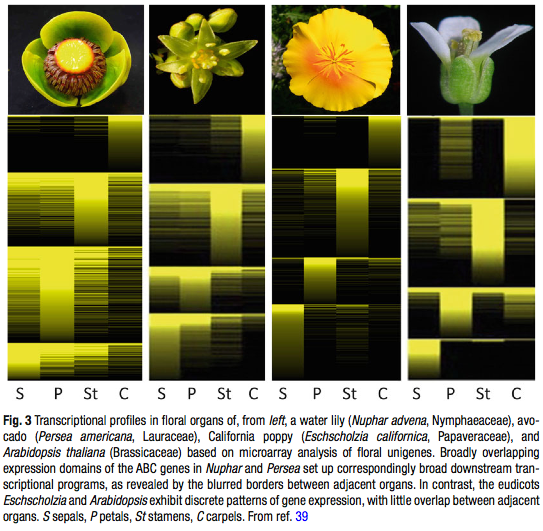 Soltis, P.S., Soltis, D.E., 2014. Flower Diversity and Angiosperm Diversification, in: Riechmann, J.L., Wellmer, F. (Eds.), Flower Development, Methods in Molecular Biology. Springer New York, pp. 85–102. [Link to article on publisher’s site]
Soltis, P.S., Soltis, D.E., 2014. Flower Diversity and Angiosperm Diversification, in: Riechmann, J.L., Wellmer, F. (Eds.), Flower Development, Methods in Molecular Biology. Springer New York, pp. 85–102. [Link to article on publisher’s site]
Abstract
The flower itself, which comprises most of the evolutionary innovations of flowering plants, bears special significance for understanding the origin and diversification of angiosperms. The sudden origin of angiosperms in the fossil record poses unanswered questions on both the origins of flowering plants and their rapid spread and diversification. Central to these questions is the role that the flower, and floral diversity, played. Recent clarifications of angiosperm phylogeny provide the foundation for investigating evolutionary transitions in floral features and the underlying genetic mechanisms of stasis and change. The general features of floral diversity can best be addressed by considering key patterns of variation: an undifferentiated versus a differentiated perianth; elaboration of perianth organs in size and color; merosity of the flower; and phyllotaxy of floral organs. Various models of gene expression now explain the regulation of floral organization and floral organ identity; the best understood are the ABC(E) model and its modifications, but other gene systems are important in specific clades and require further study. Furthermore, the propensity for gene and genome duplications in angiosperms provides abundant raw material for novel floral features—emphasizing the importance of understanding the conservation and diversification of gene lineages and functions in studies of macroevolution.